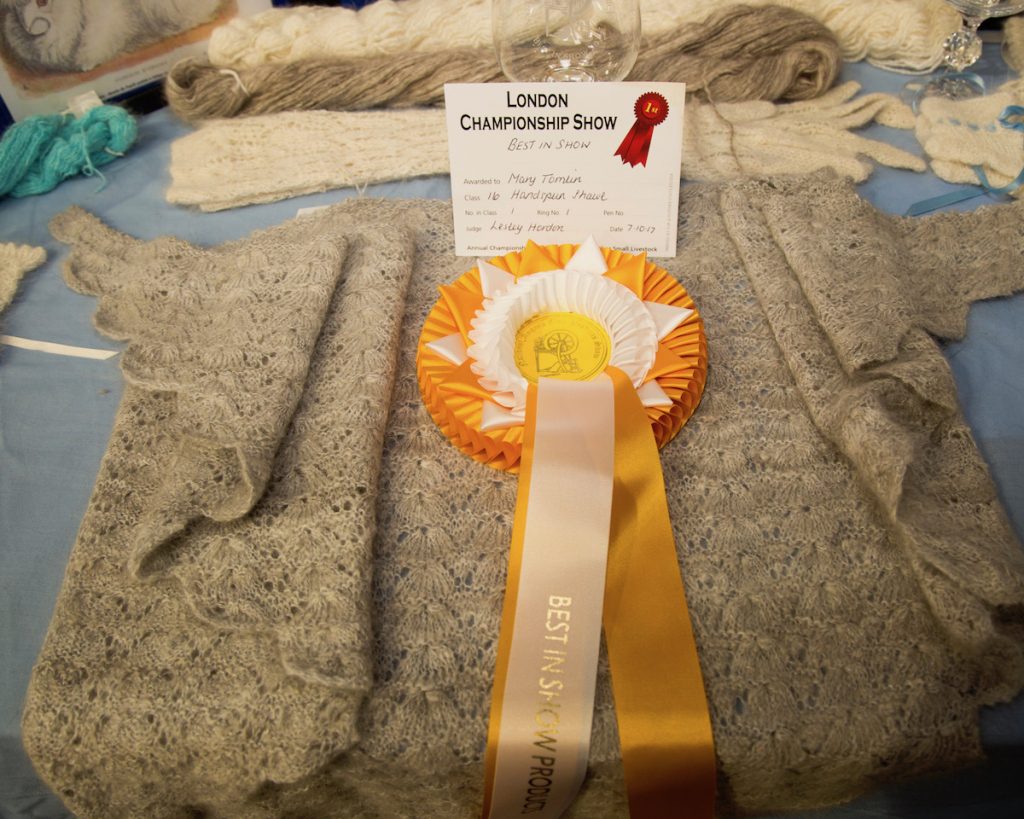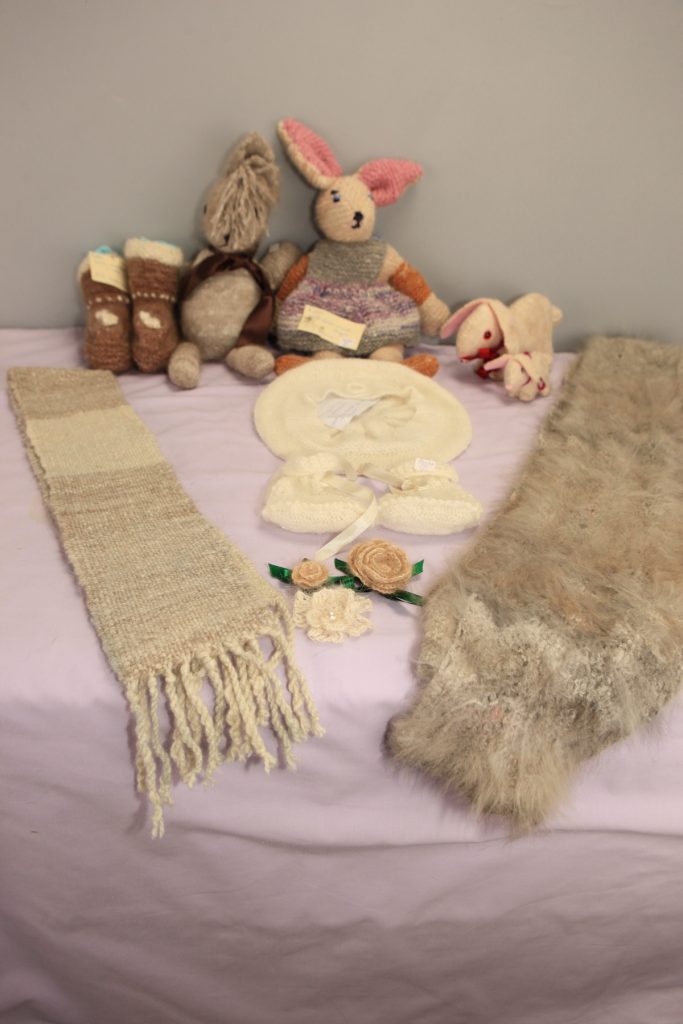
The products section of the stock show is your opportunity to get the judges opinion for free and to see how your items compare with other producers. I have heard people say “I spin and teach others” or “I sell my produce – I don’t need to compete”, but the variety of design shown on the table could be a valuable source of inspiration.
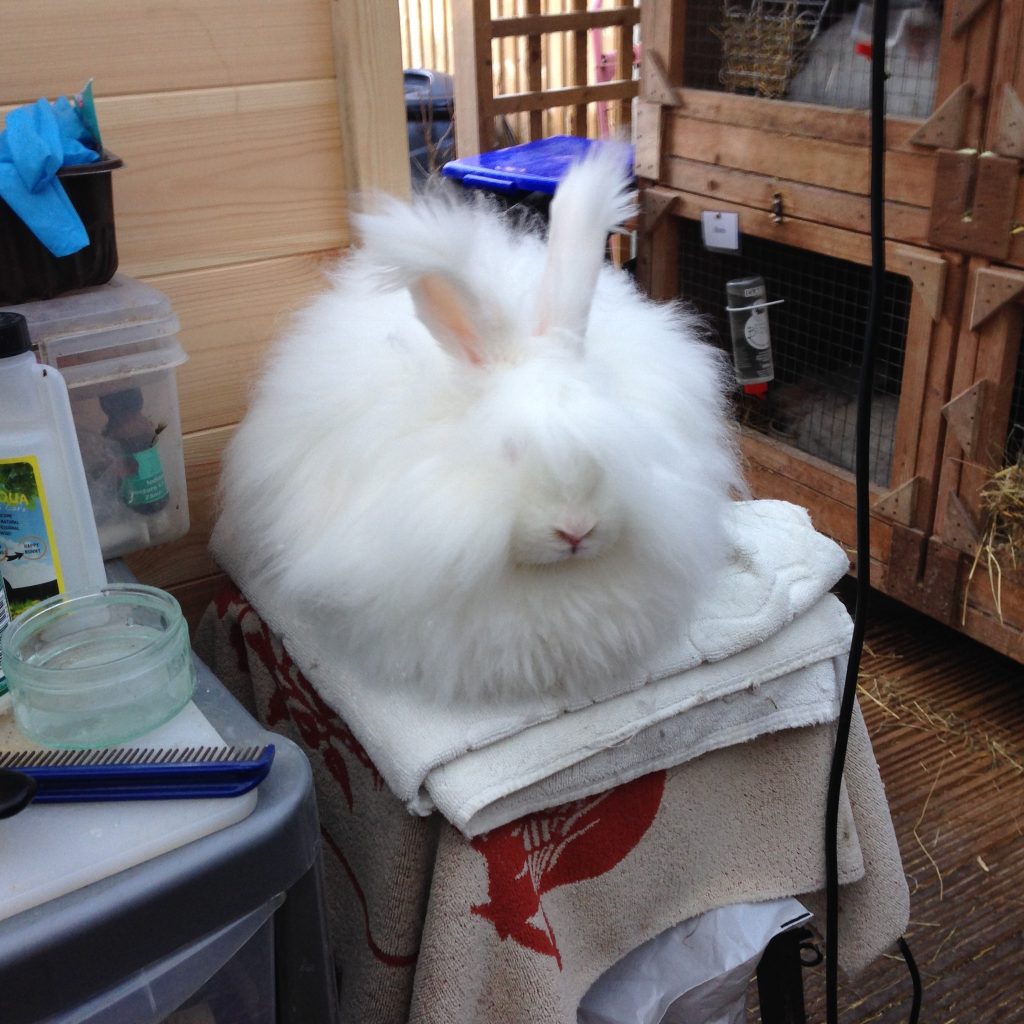
Give your entry a fair chance by preparing first the rabbit – GROOM, Obtain your box and scales for wool classes. The schedule says ‘first grade” so don’t put in stains and seeds etc, a buyer would just return it to you – without remittance. Know which rabbit supplied the wool as this will help you decide your breeding programme. Protect all samples with a lid. Oh, and double clipping is on a par with ‘stains and seeds etc”, so blow it away while it is still in your hand, if an accident occurs. Urine stained or washed wool (as in a show rabbit) has a changed character and though it can be spun, it is likely to be weak.
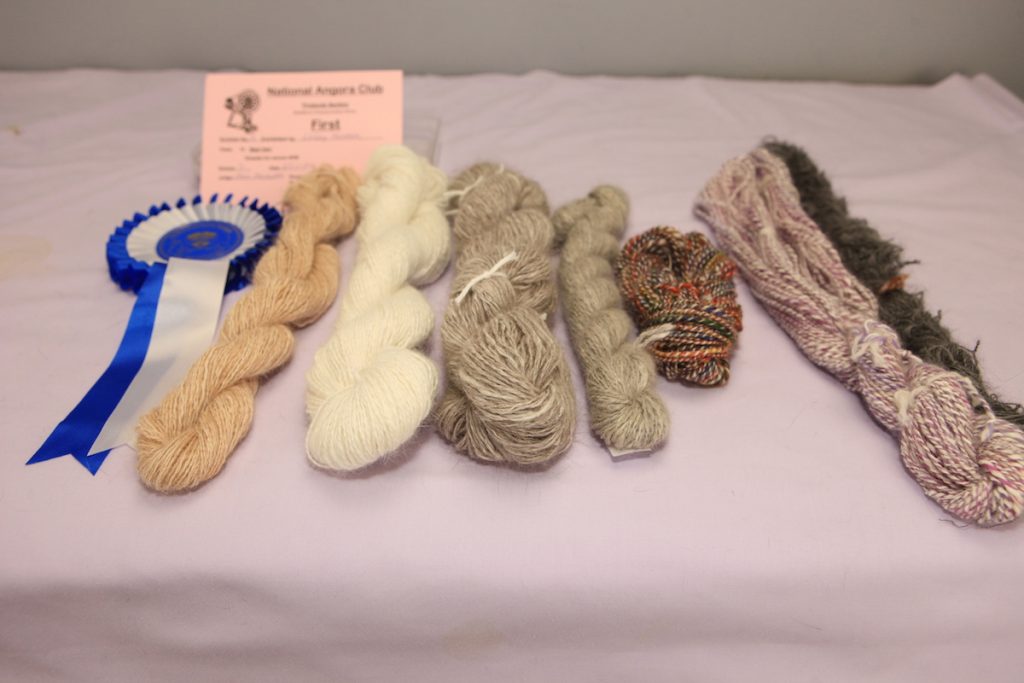
The spun yarn – there are so many different aspects to spinning both exciting and innovative, but to start with basics – read the schedule, ½ oz does not mean ½ lb, so use the scales. Test your plying ratio by hanging the skein over your hand, it should hang in a loop or just slightly turn – if it corkscrews, the plying speed should be adjusted. If exhibiting singles, spray with warm water to set yarn on the niddy-noddy and leave to dry. Worsted spun singles can look uninteresting so “settling” will allow some of the crown to rise.
Slubs of light or dark colour suggests poor blending or selection, this is why light based wools are less desirable. Woolly yarn suggests a short staple that is likely to shed, so don’t try brushing a good yarn to make it more Angora-ish.
Garment Class – a prospective wearer or buyer usually looks here first, but this is the culmination of preparation and usually the design and use of yarn is a personal preference. So I start looking at basics, holding it to the light to see if it is shedding already – this problem cannot be condemned enough – no one will give repeat orders for a garment that makes them sneeze, or wool that stocks to lipstick readily.
The look for noticeable faults in the yarn or pattern, like stains or poor shaping: before turning the item inside out. Patsy Hirstwood was the first judge I saw in action and she said the inside was to be as good as the out – I concur. Design, use of colour and blending of complimentary fibres are subjective and a decision must be made on handling the item. Any other Article , in this class, entries are usually limited by time only.
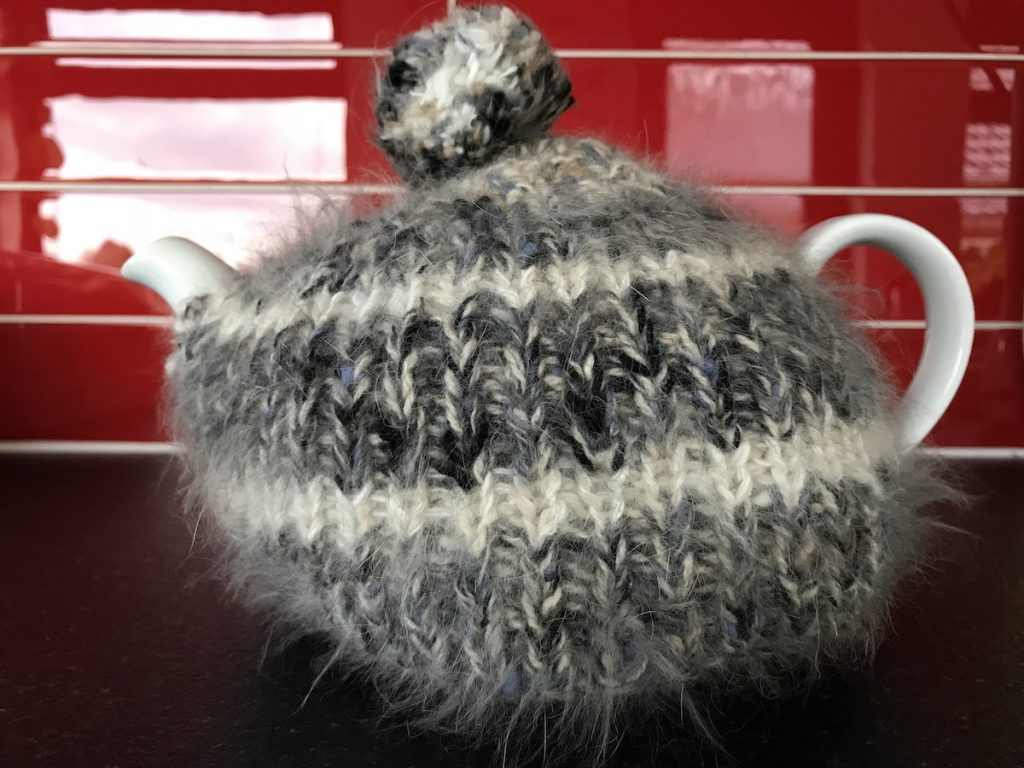
Most people find the most imaginative things to make with Angora. The item must be compatible with the fibre qualities, so childrens’ garments are generally 100% Angora and toys must be safe. I’d like to encourage more experiments with natural colours, dyes and blends, the variety open to you.
Try to join a Guild or Club if you can, the inspiration of enthusiasm shared will be well worth the effort and open exhibition and competition will broaden understanding of the luxury fibre, Angora.
Article from 1989 Year Book by Mike Head
NB: Images added to the post were not in the original article but added for interest
